Pedophile's Drag Queen Story Hours On U.S.A. Military Bases This Way To The Children
Why do children need ‘Drag Queen Story Hour’? Making children vulnerable to adult predators is something most would like to avoid, but you wouldn’t know it judging by the actions of Canadian politicians, policymakers, librarians, school staff, and some parents. Misguided adults — believing themselves to be engaging in fun, progressive entertainment — are failing to safeguard children across North America by exposing them to drag culture.
“Drag Queen Story Hour” (DQSH) became a regular event at North American libraries, schools, and bookstores beginning in 2015. The drag queens — all men dressed up as clownish versions of “women” — read stories to children under the guise of normalizing “gender fluidity” and giving kids “glamorous, positive, and unabashedly queer role models.” DQSH has chapters in 29 states, as well as in Canada, Mexico, Japan, Australia, Germany, Sweden, and Denmark. Drag story time events have become incredibly popularized, expanding beyond DQSH — a library in Saint John, New Brunswick held its own version of drag story time earlier this month, and the Toronto Public Library hosted a “Drag Queen Family Storytime” on June 18. Even small coastal towns like Sechelt, B.C. have caught on, where a Drag Queen Storytime took place over the weekend.
Lumped under the LGBTQ umbrella, DQSH claims to “celebrate diversity,” but what are children really being taught to accept? We are talking about adult men performing (really, mocking) femininity — often in provocative, sexualized costumes — the kind women don’t typically wear, certainly not when invited to read to children.
Drag queens and drag culture tend to be hypersexualized, mimicking strippers in revealing costumes; portraying exaggerated, objectified “women;” performing sexualized dances; and using explicit language throughout. Needless to say, drag is inappropriate for children. Those not indoctrinated into modern woke culture likely have an inherent discomfort upon seeing children engaging with drag culture and many have expressed concerns that normalizing drag shows for children facilitates pedophilia by “grooming” children to accept the hypersexualized behaviour and appearances of men. In a conversation with conservative commentator, Todd Starnes, U.S. Rep. Matt Rosendale (R-Montana) said:
“I’m sorry, this is a classic example of grooming these children and having them have discussions about sexuality that they should not be exposed to. And anyone that thinks that is somewhere short of child abuse is wrong. It’s very close to pedophilia as far as I’m concerned.”
These concerns are often framed as “anti-LGBTQ” or dismissed as hysteria from the Christian right. But there is validity to the fact that children who are led to view sexual perversions and hypersexualized behaviour from men as normal are easier targets for pedophiles.
Child sexual abuse is a serious problem in Canada, as well as around the globe. This year, Statistics Canada reported that between 2014 and 2020, the overall rate of online child sexual exploitation and abuse more than doubled. A 2017 Juristat report on police-reported crime statistics in Canada found that “[a]lthough the rate of police-reported violent crime declined overall, violent violations which experienced an increase in rate [included] sexual violations against children (+30 per cent)…” There are almost daily news reports of child sexual abuse, and many men openly advocate for the normalization of pedophilia, framing it as simply another sexual identity, akin to being gay.
What’s needed is more child safeguarding — not less. Yet those who express concerns about exposing children to drag culture and teaching them to accept adult men performing sexuality are accused of bigotry, as well as homophobia and “transphobia.” The presumption that those raising concerns are homophobic ignores the fact that there are feminists opposed to normalizing drag for children, who are vocally pro-gay/pro-lesbian.
The problem is that the LGBTQ umbrella has expanded to such an extent it now shelters men who wish to express their sexual fetishes publicly, which is not something only right-wing Christians are troubled by.
British journalist, Jo Bartosch, who has written for numerous publications, including Lesbian and Gay News, The Critic, and feminist website, 4w, raised concerns in her 2020 Spiked article, “Drag Queen Story Time is not okay.” She writes:
“DQST claims to offer ‘queer role models’ to children. But despite the popularity of its events, it remains unclear how a man in a lurid frock will make kids with two mums feel supported, or how DQST serves to stop the bullying of kids who don’t conform… DQST is a sinister attempt to force an adult ideology on to children.”
Proponents of these kinds of events seem to believe it is important for children to have “queer” role models. And while kids should learn it is okay to be gay, the term “queer” has become nebulous. “Queer” used to mean strange, eccentric, or homosexual, but in recent years has come to refer to anything from polyamorous to trans-identified to various sexual fetishes. We now see “furries” and men who practice BDSM at Pride, their sexual proclivities on full display under the “queer” umbrella.
The words “gay” and “homosexual” are not difficult to define — they simply mean same-sex attracted. And normalizing homosexuality in society is a good thing, but drag performances for children are not about (appropriately dressed) lesbians and gays reading to children — rather, they are about hyperfeminized, hypersexualized, cross-dressing men. Children don’t need to know about the sexual interests or “gender identities” of adults — indeed, storytime need not be politicized to reflect adult virtue signalling.
Given that drag is clearly adult entertainment, it is worth asking ourselves why child safeguarding practices have gone out the window when it comes to drag culture.
Even drag queens have cautioned parents about exposing their children to drag culture. In 2021, drag queen Kitty Demure had a message for parents who take their children to Drag Queen Story Hour:
“I have no idea why you want drag queens to read books to your children… What in the hell has a drag queen ever done to make you have so much respect for them and admire them so much? Other than put on makeup and jump on the floor and writhe around and do sexual things on stage? I have absolutely no idea why you would want that to influence your child. Would you want a stripper or a porn star to influence your child? … A drag queen performs in a nightclub for adults. There is a lot of filth that goes on, a lot of sexual stuff that goes on. And backstage there’s a lot of nudity, sex, and drugs… So I don’t think this is an avenue you would want your child to explore… But to actually get [your children] involved in drag is extremely, extremely irresponsible on your part.”
He also criticized bringing children to Pride events, saying “they don’t belong there.”
“There’s a lot of adult activity that is going on at the gay Pride events and in the nightclubs. And I think it’s just irresponsible. I don’t understand how parents allow it… There’s lots of drugs, alcohol, sex, nudity, you name it, in the gay nightclubs — they’re all like that. Children should not be a part of this culture.”
Why is this practice suddenly so popularized and why are adults going along? Drag performances feature everywhere from farmer’s markets to elementary schools — sometimes without parental knowledge or consent.
Earlier this month, Dallas parents took their children to “Drag the Kids to Pride Drag Show” at Mr. Misster, a gay bar with a neon sign inside reading, “IT’S NOT GONNA LICK ITSELF!” A handful of children were invited to strut down the walkway and “strike a pose,” led by the drag queens. Videos of the event show children handing money to drag queens in sexualized costumes, dancing provocatively as though they were strippers.
My generation was told not to talk to strangers — today, children are encouraged to engage in sexy performances with adults.
Drag has now been fully mainstreamed. Speaker of the House, Nancy Pelosi, appeared on RuPaul’s Drag Race All Stars earlier this month and tweeted about it. On the show she said, “It’s my honour to be here, to say to all of you how proud we all are of you. Thank you for the joy and beauty you bring to the world.” RuPaul’s Drag Race, a reality TV show about men who compete against each other to become the next drag superstar, judged by America’s most famous drag queen, RuPaul, is not only in its 14th season and winner of Emmy awards, it has become a franchise with spin-offs and international versions, including a Canadian one.
But drag hasn’t just been normalized as adult entertainment. In 2019, the CBC featured Drag Kids, a documentary following four kids who dream of being drag queens, and prepare to compete in an all ages drag show at Montreal Pride. The kids are hypersexualized in heels and makeup, encouraged by their parents — some of whom label their children “queer.”
This year, the CBC’s French streaming platform released a musical children’s TV series called Barbada, hosted by drag queen Barbada de Barbades (Sébastien Potvin). In the first episode, musical guest, Klô Pelgag, sings the lyrics, “germent au coeur des idées érotiques,” which translates to “germinating erotic ideas in the heart,” and in episode two Guylaine Tanguay sings, “Il m’a appris à yodeler et comment faire l’amour” (“He taught me how to yodel and make love”). Growing up, I watched many popular children’s TV shows, including Sesame Street, The Polka Dot Door, and Passe-Partout, and don’t recall any mention of “erotic ideas” or men teaching women about lovemaking.
Last year, Disney+ aired This is Me: Pride Celebration Spectacular, a concert hosted by “Drag Artist and LGBTQ+ Advocate” Nina West (Andrew Levitt). The 43-year-old, who refers to himself as a girl, is joined by beloved muppet Kermit the Frog, as well as other drag queens, like Jackie Cox (Darius Rose), who perform children’s songs from Beauty and the Beast and The Little Mermaid.
Netflix series, AJ and the Queen, couples a drag queen named Ruby Red (played by 60-year-old RuPaul) with a 10-year-old girl named AJ (Izzy G.), who travel across the United States together in an RV for Ruby’s cross-country drag tour. Ruby Red/Robert is portrayed favourably, as patient, level-headed, and generous — the Mr. Rogers of drag. AJ is repeatedly exposed to sexualized behaviour and speech, as characters say things like, “Half my girlfriends have penises” and “Girl, we gonna take the Hershey highway [a reference to anal sex] — if you were older, you’d love that.” A gay policeman talks about hooking up with a man in front AJ, saying, “Sorry, not great language for a kid.” Robert responds, “Her? She’s 50.” This series, similar to others featuring drag queens, grooms viewers not to see this as inappropriate. Apparently drag makes adult men inherently safe and trustworthy.
Last year, child drag superstar, Desmond Napoles (aka Desmond is Amazing), was featured in the TV special Stonewall Inn Safe Spaces Concert. He wore makeup, heels, a short sequined dress, and a skin-tight outfit exposing his midriff, dancing in a feminized way. According to Dazed, “Desmond Napoles was only eight when a video of him vogueing his way through the NYC Pride Parade in a rainbow skirt went viral. Since then he has catapulted to stardom in the global queer community…” There are numerous images and videos of the now 15-year-old online, emulating the adult men who perform drag in provocative ways. Desmond now identifies as “they” and has founded Haus of Amazing, a drag community for kids.
Concerns have been roundly ignored. Despite public complaints, a Quebec library went forward with a drag queen storytime featuring Barbada, who said in defense of his performance:
“Every kid who comes to see this story hour is, you know, goes back home with a sense of: Okay, I understand what a drag queen is. I understand that it’s different, but it’s definitely not dangerous and we can have a great time with a drag queen.”
The mayor of Dorval responded to the complaints, saying, “We do not want anybody to come here and protest and make their point of view.”
These events have not been without issues. In 2019, the Houston Public Library admitted they allowed a registered sex offender — 32-year-old Alberto Garza (aka Tatiana Mala Nina) — to read to children at Drag Queen Storytime. That same year, Sasha Sota flashed flesh coloured tights to a group of toddlers during Drag Queen Story Hour at Hennepin County Library in Minnesota. A Portland, Oregon library made the news when pictures emerged of children lying on top of the drag queen performing at its Drag Queen Story Hour.
In 2021 Brett Blomme, the former president of LGBTQ+ advocacy group Cream City Foundation, the primary financial sponsor of Drag Queen Story Hour Milwaukee, was charged with seven counts of possession of child pornography. Last year, Anna Slatz reported that Katy Baird, who was performing with Palaver Party for Kids, a drag and cabaret-themed show, boasted on the production company’s website, “I am thrilled to be given this incredible opportunity to corrupt young minds with queerdo stories, aesthetics, and politics…”
Most parents want to protect their kids from sexual predators, so why are so many allowing their children to be exposed to adult entertainment and strange men? It would seem that many parents unquestioningly accept the messaging advanced by DQSH organizers and proponents, which conflates drag with homosexuality. These parents believe they are promoting “diversity” and open-mindedness to their kids. People wish to appear progressive, not bigoted, and we are repeatedly told only bigots do not support everything LGBTQ+. People also tend not to want to look too closely at the problem of pedophilia; it is too upsetting and uncomfortable. Going along with the sparkly, rainbow-coloured narrative is much less demanding than considering unintended consequences or thinking more critically about the narrative put forward. Besides, all those movies and TV shows feature drag, so it must be okay!
What these parents, as well as librarians, school staff, and others, seem to have forgotten is that historically, sexual predators have rarely been open about their true nature and motives. The Catholic priests that abused children and men like Jimmy Savile didn’t tell parents they would be preying on their children. In fact, they did the opposite. They groomed them, and tricked them into believing they were safe, which led to horrendous suffering. Drag queen story times break down children’s natural boundaries toward strange men and vulgar behaviour, making them vulnerable to sex predators.
Drag is not the province of children. There are age-appropriate ways to offer children gay role models, minus the addition of sexualized themes.
I'm with you most of the way, but I don't know why you had to have a crack at furries. I would easily rather have furries coming in to read children's stories in schools. After all, if a child decided they wanted to be furry, they could get in a fursuit play at being a fluffy animal and when they grew up and realised it was stupid they could unzip the suit and take it off. Not something you can easily do after 10 years of hormone therapy. Nor after you've had your penis removed or your breasts cut off. As a man, I find drag Queen's revolting. Not because I'm a homophobe, but because it is a blatant insult to women. When they dress up like this, this is their idea of what women look like. It would be no different if I got on stage in blackface and called myself a drag slave. There would be outrage and rightly so.
i am appalled at the views expressed in this article. drag is performance. not fetish. equating drag queens with pedophiles is no different than equating gays and lesbians with pediphiles; an old and tired and awful attack. these are dangerous views. we have many ways we try to promote literacy. kids have pajama parties in libraries. kids read books aloud to animals in shelters. and yes, theatrical drag performers certainly hold attention when they read to children. shame on you for damning a group of performers who want to share literature with children and calling them pedophiles. you sound no different than the far right christian trumpers. seriously? your article diminishes feminism. it is a problem. this fear-mongering is a problem and a gross distortion of feminism.
I know a trans man who is about to turn 33. He didn't finish college and left his parents with a crushing debt because he was too depressed to deal effectively with financial aid problems. He quit going to class a couple of months and hid out in his room, while he waited to be kicked out. He made it through the semester, and when he could see no way out other than to pretend to go through the graduation he hadn't earned, he did just that. Then he spent the next six months camping out on his sister's floor, too depressed to do anything except move his car on street-sweeping day. He was on the verge of suicide. Fortunately he made its through, got a two-semester bookkeeping certificate, and now has a full-time job with benefits. Suicide is mostly in the rearview mirror now. This is a person with a high degree of integrity and a commitment to the higher good. I give thanks for him every day. The young man I speak of is my son. This article is horrible, and feeds the kind of hatred that nearly killed my own kind and brilliant child.
Well, statistically speaking, it seems that most drag queens are homosexual and most pedos are homosexual as well. Now correlation cannot be causation, however, correlation does actually tell us something. Now I can't say that the majority of drag queens are pedophiles, but I would say that in general. Putting your kids in a room full of drag queens will expose them more to paedophiles. Then it would putting them in a room full of farmers. Or engineers. Or astronauts? And is it a healthy thing for children to see the idea through the eyes of a drag queen of what a woman looks like and acts like? Because this is exactly what is being shown. A misogynistic gay man. Showing kids what he thinks about women. That's what a drag queen is that's what a drag queen does. Even if he doesn't touch the kids sexually. He has already done the damage mentally.
im a therapist. drag queens do not equal pedophiles. this is not a sexual orientation nor is it a fetish. it is performance. a pedophile can hide anywhere. a teacher. a counselor. a priest. a relative. this article is shameful. feminists turning on drag queens and labeling them as pedophiles? let’s just do to them what has been done to gays and lesbians??? i would not expose my child to these so -called feminists. i would however bring my child to have a book read to them by a drag queen.
I don't think that "drag queen story hours" for children are a good idea. I don't understand the current fascination with drag queens and the example of the child drag queen Desmond is very depressing. However, I disagree with the author when she suggests that drag queens are dangerous child abusers ("sexual predators have rarely been open about their true nature and motives"). She is demonizing drag queens - there is no empirical evidence indicating that drag queens are more likely to be sexually attracted to children than other men.
Of course there have been examples of drag queens who turned out to be sex offenders, but the idea that drag queens (who tend to be gay men) are much more dangerous than other men is based on prejudice towards men who disobey gender expectations, not on facts. Children are the most vulnerable to sexual and other abuse in their own homes. Their mum's new boyfriend is much more likely to become their abuser than a drag queen.
The author mentions the "sexual perversions" of drag queens: I am wondering what she means by that. Is dressing as a woman or "performing sexualized dances" a form of "sexual perversion"? This sounds very intolerant to me, though I am not in the least enthusiastic about drag queens...
I just became aware of Drag Queen Story Hour -- at my small-town Massachusetts library. Turns out it's been happening for several years. What were they thinking?? I know the library director pretty well and intend to ask her, but the normalization of this surprised me because I've been around long enough to see how misogynistic men in drag can be. I'd still caution about getting into bed with the right wing on this, or on any other issue where our views seem to coincide on the surface. The right has a lot more money and clout. In coalition with them we have no power at all.
Think All Child Molesters are Pedophiles? Think Again. ? Categorizing those that sexually abuse children as predatory pedophiles is not only a common misconception – it’s also dangerous. It gives us a sense that offenders are easier to identify through grooming behaviors or a lack therof, and easier to understand – that they have a sexual perversion that can’t be cured. This makes it all the more difficult to understand how someone respected and well-liked could sexually abuse a child, and consequently convict abusers who do not have a pattern of behavior that people would believe would correlate with being a pedophile. For example, those that sexually abuse children may view adult pornography, creating a defense that they must be innocent because they do not exhibit signs of being sexually attracted to children. But, based on the evidence about sexual abuse, sexual attraction to children is not a prerequisite to sexual molesters of children.
We think of sexual offenders as wolves waiting to pounce from the shadows, when in reality – it’s more often the gentle shepherd that we need to focus on. Why is this? Why would seemingly good people sexually abuse children? Decades of research suggests it has less to do with sexually attraction, and much more to do with the psychological issues behind their motivation.
What are Pedophiles, Exactly?
A pedophile is an adult person (usually male, but can be female) that has a sexual attraction to prepubescent children. They may prefer a specific sex or be sexually attracted to both males and females.
There are also hebephiles – adults attracted to adolescents that have entered puberty – generally aged 11-14 years old.
A pedophile does not become a sexual offender until they act upon those sexual urges, by viewing child pornography, or sexually abusing children.
Since they have an innate sexual attraction to children, those that offend, will seek out children. Some may groom children over a period of time, and others may act impulsively and abuse a child briefly.
Other perpetrators that prey on children, may do so because of sadistic or sociopathic tendencies – they take pleasure in mentally and physically manipulating and abusing others and may also target adults.
So, How is A Situational Offender Different? Possible Scenarios of Situational Offenders:
They can be family members, teachers, coaches, babysitters, and most juvenile offenders. Examples:
A grandfather that never abused his own children, but molested his grandchildren.
A teacher that seduced a student from their class.
A boy that sexually abused his sisters and her friends during a playdate.
A nanny that took photos of her sexually abusing a child in her care and sent the photos to her boyfriend.
In these cases, the offenders did not necessarily ‘seek out’ an opportunity to abuse a child, but rather, found themselves in a situation that enabled them to abuse a child and took it. Sure – some predatory pedophiles may purposely seek such positions, but situational offenders do not. Grooming techniques may be used, but the basic foundation of trust – and most importantly, access, has already been established.
Why Do They Abuse?
The FBI has established four types of adult situational offenders and the psychological issues behind their behavior:
Repressed offenders
may be struggling with a job loss, divorce, illness, or death in the family or other life issue that is causing feelings of stress or depression.
The morally indiscriminate
may physically abuse children as well as sexually or physically abuse other adults. It’s not about sex as much as it is about control and desecration of another human.
The sexually indiscriminate
may have an addiction to sex and be involved in other illegal sexual behaviors – prostitution, bestiality etc.
The inadequate offender
may be considered a social outcast due to communication barriers or physical differences that make forming intimate relationships with their peers difficult.
Situational offenders often have sexual relationships with their peers, or they may struggle socially and fail to form intimate relationships with other adults. Children are an easy target – easier to coerce, manipulate, control and silence. It is no coincidence that child abuse and animal abuse are connected. Those most vulnerable are at the greatest risk to be targeted by those that seek pleasure in abusing others.
‘Thinking Errors’
While child sexual abuse is morally wrong, many offenders create and reinforce ‘thinking errors’ to rationalize and minimize the impact of their abuse. The inclusive and most detrimental factor of these errors is that they refuse to consider the best interests of the child.
For example:
They may convince themselves that if the child is young enough that he/she won’t understand or remember.
That children are not ‘people’ and do not have the same rights as adults.
That their children are their property.
Abusing children not their own is ‘less bad’ than abusing their own biological children.
That the relationship is loving – that they are filling an emotional need for the child.
That the child wants and/or sought out the sexual abuse and had the developmental readiness to enter into such a relationship.
That they are ‘teaching’ the child about sex.
That if the child consents to the abuse, it isn’t abuse.
That they are not physically harming the child – so therefore, their behavior is not damaging the child.
That the child deserves to be punished.
Aren’t Most Adult Offenders Former Victims?
Hindman and Peters (2001) found that 67 percent of sex offenders initially reported experiencing sexual abuse as children, but when given a polygraph (“lie detector”) test, the proportion dropped to 29 percent, suggesting that some sex offenders exaggerate early childhood victimization in an effort to rationalize their behavior or gain sympathy from others.
Female Offenders
Although limited research exists, it is suggested that for many cases involving female perpetrators the motivation is not primarily sexual, but emotional needs (loneliness, low self-esteem, depression), and that women offenders are more likely to have experienced or be in abusive relationships (sexual, physical, and/or psychological) than male offenders.
Evidence would also suggest that female perpetrators are less “predatory” and lean more toward being “opportunistic” offenders.
Practical Aspects of Rape Investigation, offered the following types of female perpetrators:
Facilitators women who intentionally aid men in gaining access to children for sexual purposes
Reluctant partners women in long term relationships who go along with sexual exploitation of a minor out of fear of being abandoned
Initiating partner women who want to sexually offend against a child, they may do it themselves or get a man or another woman to do it while they watch
Seducers and Lovers women who direct their sexual interest against adolescents and develop an intense attachment
Pedophiles women who desire an exclusive and sustain sexual relationship with a child (a very rare occurrence)
Psychotic women who suffer from a mental illness and who have inappropriate sexual contact with children as a result
Juvenile Offenders
This may be one of the biggest reality-checking curve-balls regarding child sexual abuse. Who would have ever thought up to 35-40% of abusers were older or more powerful children?
Seven out of eight juvenile offenders are at least 12 years old, and 93% are boys. (Crimes Against Children Research Center, UNH, 2010)
What would bring a child to sexually abuse another child?
Sexual curiosity and a lack of proper education and guidance of healthy sexual behaviors
Acting out in response to physical abuse, neglect, or sexual abuse
Sexual abuse as a form of bullying
Sexual abuse as a prank or form of hazing
While recidivism rates are hard to determine due to the challenge that most abuse is not reported, there is evidence to suggest that juveniles respond more positively to treatment than adult offenders.
However, the prevalence of child-on-child sexual abuse is enough to warrant a nation-wide awareness effort for parents and caregivers to educate children on healthy sexual behaviors and remain vigilant for signs of abusive tendencies. Also, given that most children are exposed to pornography before they enter high school, and the growing evidence that such exposure can create dangerous attitudes regarding sex, the threat of sexual abuse by juveniles to increase, not decrease, is certainly arguable.
How Can We Stop Them?
Even though they are not targeting children with premeditated abuse intended, situational offenders may still employ ‘grooming’ tactics to gain access and break down a child’s barriers.
When we say that raising awareness for child sexual abuse is part of the solution – we mean it. Offenders can be deterred when people are educated and talk about child sexual abuse openly. Silence truly does empower abuse because it allows those ‘thinking errors’ space to grow. If no one is talking about it – then it is more comfortable for potential offenders to think about it, and rationalize abuse.
Minimize opportunity – child care centers, youth serving organizations, and schools have a lot of work to do to make their environments safer for children. How they screen applications, train staff, and the policies and procedures they have to make sure conduct between staff and the children are appropriate and increase understanding of grooming behaviors and how to appropriately handle suspected or disclosed abuse. And, there is a lot we can do within our own homes, during playdates, family gatherings etc to keep our kids safe with those we trust the most.
Educate children. Children deserve to know their rights and have those rights upheld by the people who have the power to do so – adults. They need to be told no one – not their parents, not their babysitter, or even their doctor should be touching them in a way that makes them feel uncomfortable – and especially in regard to their private parts. They need to know that it is never their fault and that it is never too late to tell. It should never be a child’s responsibility to prevent abuse – rather, the focus should best be kept on telling someone when they have a concern. And, with so much abuse being perpetrated by other juveniles, all children need to be educated early and often on the concepts of consent, respect, and healthy body boundaries.
Think of prevention education like a security system – awareness is the lock on the door that deters the situational offenders. By working to minimize opportunity and be vigilant for red flag behavior of possible grooming situations – those are the motion detectors that sound off when there is dangerous movement. The educated child knows they can call for help when someone (most likely someone they know) – violates the rules of body safety. Educating children without working to educate the adults that surround our children is, in a way, like leaving the door wide open and leaving it up to our children to defend themselves.
Does this mean we trust no one with our children? No. It means we trust with knowledge and vigilance. Trust is not a gift – it is a continual function of healthy relationships. And when we trust – we verify that trust.
Now the only question is – if education is a major factor in preventing abuse, what will it take to break the taboo surrounding child sexual abuse that holds people back from even talking about it? Perhaps understanding what motivates abuse can help tear down the blinders so many eagerly wear and tighten to defend identified abusers.
I have been asked whether the "errors in thinking" that give rise to numerous forms of criminal conduct apply also to sex offenders, especially pedophiles. The answer is that they do. Specifically:
1. The pedophile does not put himself in the place of the youngster in terms of considering possible psychological damage.
2. The pedophile justifies sexual contact with minors when held accountable in many ways, including saying that the youngster "wanted it." Even if this were the case, the perpetrator knows it is illegal and that not only will he pay a price for this behavior, but the youngster will likely have to face interviews by the police, social services, and others. That is, there is an aftermath that causes suffering even if the youngster willingly participated. While professing how much he cares about the child, the perpetrator of the sexual conduct lacks an operational concept of "injury" to others.
3. The pedophile insists that the behavior be kept secret. He thereby exercises total control over the youngster in order to protect himself.
4. The pedophile is shutting off from awareness deterrents, both in terms of potential consequences of what he knows to be an illegal act, and he is shutting off deterrents of conscience.
5. The pedophile regards his situation as unique and fully acceptable and justifiable after the fact.
6. The pedophile often takes advantage of youngsters who are emotionally troubled and psychologically needy.
7. The pedophile operates in secrecy. He knows right from wrong but what he wants to do is "right" for him at the time.
These are among the thinking errors that underlie adult sexual contact with and exploitation of children.
Are Pedophiles Born or Made? Both nature and nurture combine in a complex way in the genesis of a pedophile. KEY POINTS
As for other mental disorders, evidence is increasingly showing that both nature and nurture play a role in the genesis of pedophilia.
Some neuroscientists claim to have demonstrated by brain imaging studies that the brains of pedophiles are wired differently to non-pedophiles.
An individual’s environment, particularly when they themselves are still a child, can also affect whether they later develop pedophilic urges.
A better understanding of how pedophilic urges arise in a person might help us to recognise and prevent them before they ruin children’s lives.
Surely few things are as likely to generate revulsion in society as pedophilia. This behaviour triggers revulsion not only because of the perceived unnaturalness of the attraction, but also because if pedophiles act upon their desires, they may wreck the future lives of the children they target, with all the physical and psychological trauma that can ensue.
Our revulsion is also based on the fact that children are seen as innocent and vulnerable compared to adults and the pedophile threatens to exploit that vulnerability and destroy that innocence. Important questions to address, then, are: What causes pedophilia? And how we might better diagnose and treat those with the disorder?
Understandably, some believe we should not even debate this issue. As Paul Jones, father of April Jones, a five-year-old girl from Machynlleth, Wales, who was abducted and murdered by a pedophile in 2012, has explained, "People, they think, 'Why should we help the pedophile? We should be prosecuting them, throwing them in jail, having them castrated.’"
Perhaps surprisingly, Jones does not believe in this approach. As he notes, "If we offer help to pedophiles, we might save children who might have been abused."
Why Understanding the Cause of Pedophilia Matters
If we take this approach, we need to establish—as for other mental disorders—whether pedophiles are a product of biology or environment. And as for such other disorders, increasingly it seems that both nature and nurture play a role in the genesis of pedophilia.
Certainly, some people think the condition is primarily a product of defective biology. For instance, James Cantor, of the Centre for Addiction and Mental Health in Toronto, who uses magnetic resonance imaging to scan pedophiles’ brains, believes that "pedophilia is a sexual orientation; [it’s] something that we are essentially born with, does not appear to change over time, and it's as core to our being as any other sexual orientation is."
Cantor claims his studies show that the brains of pedophiles are wired differently to non-pedophiles. According to him, "It’s as if, in these people, when they perceive a child, it’s triggering the sexual instincts instead of triggering the nurturing instincts."
But we need to know whether any differences detected in scans of pedophiles’ brains are a cause of their behaviour, or its consequence. It is worth mentioning in this context a U.S. citizen who suddenly developed a sexual attraction towards children. This man, who was living with his second wife and his stepdaughter, became overcome by troubling urges.
He began collecting material focusing on pedophilia and making sexual advances towards his prepubescent stepdaughter. She told her mother, and the man was thrown out of the family home. However, at this point, he began experiencing violent headaches and loss of balance. Rushed to the hospital, a scan revealed that he was suffering from a brain tumour.
Amazingly, once this was surgically removed, the man’s headaches and balance problems disappeared, but so did his paedophilic urges. Seven months later, he completed a sexual offenders’ rehabilitation programme, and was allowed to return home to his wife and stepdaughter. But he became concerned when he again started to develop persistent headaches and a renewed interest in child pornography. The tumour that apparently had caused his pedophilia had returned. When it was removed, he was once again cured.
Scientists concluded that the tumour interfered with the orbitofrontal cortex, which helps to regulate social behaviour, and exacerbated the man’s pre-existing interest in pornography, "manifesting sexual deviancy and pedophilia." Clearly, pedophilia is not generally caused by brain tumours, but this case shows that brain biology should not be disregarded when seeking to explain why some individuals show such horrifying sexual urges.
The Role of Nurture in Pedophilia
At the same time, it seems that an individual’s environment, particularly when they themselves are still a child, can also have an important impact on whether they will later develop pedophilic urges. Sadly, evidence shows that many people who sexually abuse children were themselves abused as a child.
Take, for example, Nicholas, an Australian married father-of-four who admitted to being attracted to boys aged 12 to 14 in a 2016 report about pedophilia, but says he has never acted on his urges. According to Nicholas, "No-one chooses to be sexually attracted to children. And those of us who are unlucky enough to be sexually attracted to children can’t [make it go away]. But many of us can and do successfully resist our attraction."
Yet he knows what it is like to be a recipient of such abuse. At 12 years old, he was molested by a holiday camp counsellor. In fact, about half of child sex offenders were sexually abused as children.
It is important to note that the vast majority of sexual abuse victims do not grow up to become abusers. However, some scientists believe a biological predisposition to the condition, combined with the experience of being molested as a child, might lead to someone developing the condition as an adult. According to James Cantor, "It could be that biology causes pedophilia, but that environment makes a person more likely to act on that sexual interest and molest a child."
A common form that discussions about "nature vs. nurture" take is that biology and environment are separate, albeit able to produce a combined effect in an individual. However, the idea that human behaviour is determined either by biology, or social environment, or a simple addition of the two, is being challenged by new findings in epigenetics, a subject that a recent article in Nature claimed provides "a molecular middle ground in the centuries-old debate over nature versus nurture." And it seems that even our genomes are highly sensitive to our environment, which can include traumatic experiences.
So it wouldn’t be at all surprising if the respective roles of biology and environment in the genesis of a pedophile turn out to be highly complex and intertwined. Acknowledging this complexity is surely vital if we want to better understand how pedophilic urges arise in an individual and how we might recognize and prevent them before they ruin children’s lives.
Pedophiles don’t have signs on their backs or neon arrows pointing over their heads. It’s easier to believe that the “dirty old man in the park” rather than the clean-cut bus driver down the street is a pedophile.
Pedophiles aren’t confined to our Catholic churches. They are in Protestant churches, synagogues, and mosques. Some of them are teachers, counselors, scout leaders, truck drivers, factory workers, and youth ministers.
In fact, they are wherever children can be found, irrespective of age, race, education, occupation, class, social standing, or income.
Celibacy isn’t the reason priests prey on children. Sexual attraction to children, and sexual gratification from children, are the reasons.
Characteristics of a Pedophile
There is no hard and fast profile of a pedophile.
Here are some general characteristics:
Popular with both children and adults.
Appears to be trustworthy and respectable. Has good standing in the community.
Prefers the company of children. Feels more comfortable with children than adults. Is mainly attracted to prepubescent boys and girls. Can be heterosexual, homosexual, or bisexual.
“Grooms” children with quality time, video games, parties, candy, toys, gifts, money.
Singles out children who seem troubled and in need of attention or affection.
Often dates or marries women with children that are the age of his preferred victims.
Rarely forces or coerces a child into sexual contact. Usually through trust and friendship. Physical contact is gradual, from touching, to picking up, to holding on lap, to kissing, etc.
Derives gratification in a number of ways. For some, looking is enough. For others, taking pictures or watching children undress is enough. Still others require more contact.
Finds different ways and places to be alone with children.
Are primarily (but not always) male, masculine, better-educated, more religious than average, in their thirties, and choose jobs allowing them greater access to children.
Are usually family men, have no criminal record, and deny that they abuse children, even after caught, convicted, incarcerated, and court-ordered into a sex offender program. The marriage is often troubled by sexual dysfunction, and serves as a smokescreen for the pedophile’s true preferences and practices.
Are often, but not always, themselves victims of some form of childhood sexual abuse.
Even if the pedophile has no children, his home is usually child-friendly, with toys, books, video games, computers, bikes, swing sets, skateboards, rec room, pool, snacks – things to attract children to his home and keep them coming back. Usually the items reflect the preferred age of his victims.
A female pedophile usually abuses a child when partnered with an adult male pedophile, and is often herself a victim of chronic sexual abuse.
A pedophile can act independently, or be involved in an organized ring, including the Internet, NAMBLA (North American Man/Boy Love Association), and other pro-pedophilia groups. Some pedophiles recognize that their behavior is criminal, immoral, and unacceptable by society, and operate in secrecy. Some are quite open and militant about their practices and advocate the normalization of pedophilia under the guise of freedom of speech and press, and uses innocuous language like “intergenerational intimacy.”
Pedo means “child” in Greek. Phile is a derivative of Greek, Latin, and French, meaning “love.”
The Exclusive type of pedophile is attracted to children only. The Non-Exclusive is attracted to both children and adults.
Abuse Patterns & Treatment
A pedophile will not stop on his own, and will not turn himself in, because he does not take responsibility for his behavior and denies that he’s doing anything harmful. He will abuse until he’s caught.
A child does not always recognize when he or she is being abused, manipulated, or groomed by a pedophile. Unless the pedophile is a sexual sadist, he does not have to threaten a child into silence. The trust, gifts, secrecy, and “relationship” are enough.
In some cases, the abuser will coerce the child into silence by saying that if anyone finds out, he would go to jail, or the child would, and maybe the child’s parents. In other cases, threats to harm the child, pets, and family are used.
Pedophiles can be “treated” but never cured, because their sexual preference has always been, and always will be, children. Their urges will always be present. Therefore, treatment focuses on changing, curbing, or re-directing the acting-out behaviors of pedophiles.
Summary
Knowing the profile of a pedophile, does this mean that the little league coach who has a great rapport with kids and treats them to pizza at his house is suspect? Or that the teacher who throws pool parties is? Of course not.
The majority of people who like and work with children are not pedophiles. It does mean that we should be observant of all the adults in our children’s lives, whether they wear a white collar, a blue collar, or a clerical collar.
If a child tells us he or she has been sexually abused by someone, be it family, friend, or trusted adult, we are obligated by law to report it to a child abuse hotline, police, or local children’s services agency.
-
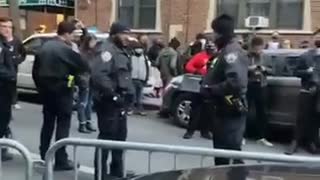 16:54
16:54
AUSTERE SCHOLAR
1 year agoCHILD GROOMING Gang disguised as Drag Queen Story Hour
131 -
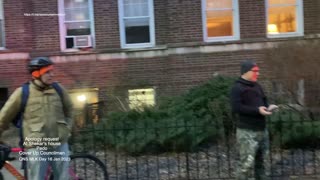 10:34
10:34
AUSTERE SCHOLAR
1 year agoSuspected child groomer's home visited again 16th Jan
2791 -
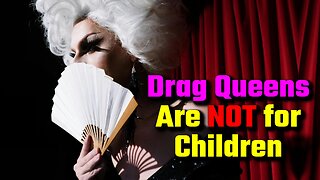 6:22
6:22
Daily Insight
3 months agoAre Drag Queens Suitable for Children?
3211 -
 4:40
4:40
Right Edition
1 year ago $0.02 earnedProtect the Children - Invasion USA - CRTC Censorship
1451 -
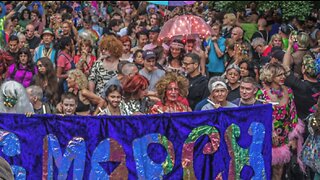 12:30
12:30
Derek O'Shea Show
11 months agoOutrage over 'We're Coming For Your Children' chant at NYC Drag March
295 -
 1:23:56
1:23:56
WE ARE THE NEWS (WATN)
1 year agoTrump To Visit East Palestine, Chase & The Nazis, Diana's Secrets, Navy Begged Cuomo To Use Comfort
2.1K30 -
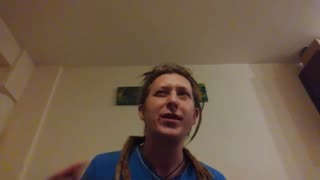 6:40
6:40
Ben Westwood UK
10 months agoThe Secret Language of Organised Paedophiles
209 -
 1:49
1:49
Truths Unlimited
11 months agoJack: Pedophiles Are Seething! For 5 Yrs Hollywood sat on 'Sound of Freedom': Angel.com/FREEDOM
2.81K2 -
 59:17
59:17
Illuminati
11 months agoSatanic Elite Pedophiles
4.71K20 -
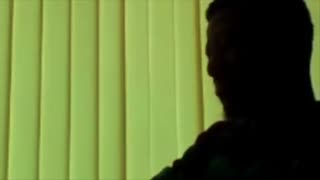 10:03
10:03
thekalonu
6 months agoTHE PEDOPHILE PRINCE: Eyewitness testimony confirms it
1.42K6